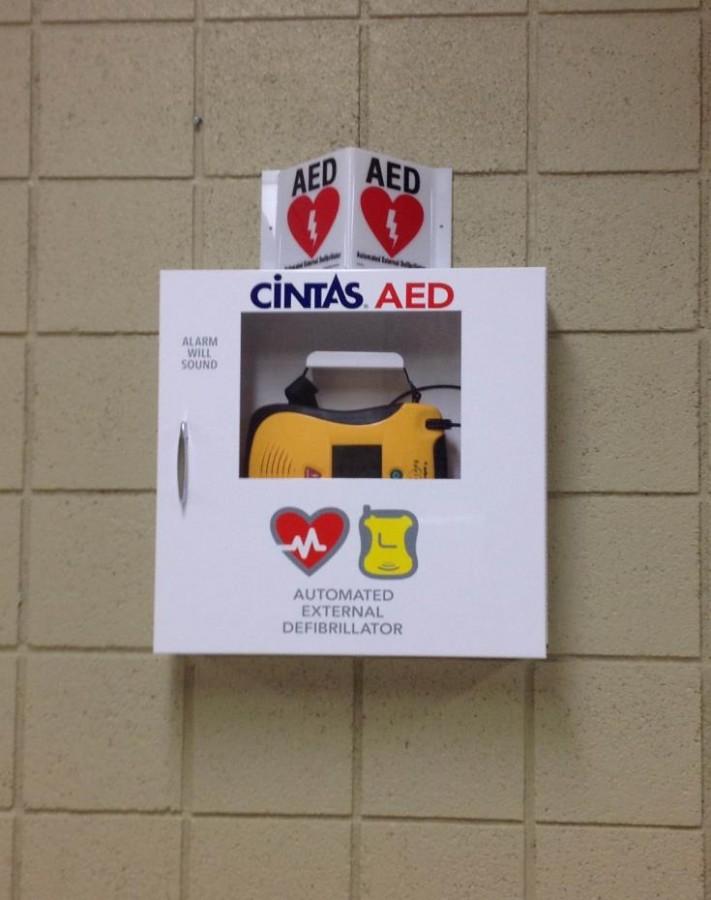AED: a shocking piece of equipment
Automated External Defibrillators (AEDs) may sound like rusty medical tools used in old horror films, but they might actually save your life one day. Mercy purchased five new machines over the summer of 2014.
“An AED is used in cases of life-threatening cardiac arrhythmias which lead to cardiac arrest,” said Mercy’s Athletic Trainer Nicole Schreiber. “In other words, it can be used to save lives in the event of a heart attack.”
Schreiber also said that an AED will not shock someone who has a normal heartbeat, nor will it shock someone who has no heartbeat at all. It will only work on a person who has V-tach, a heart beat too fast to pump and circulate blood, or V-fib, chaotic electrical activity of the heart.
Claude Beck developed the first defibrillator in the 1930s and successfully revived a 14-year-old boy in 1947, according to Case Western Reserve University. Since then, the defibrillator has become more technologically advanced. Defibrillators now include built-in computer systems to tell if the machine should be used or not.
“There is also video and audio instruction so you do not have to be afraid to use it, even if you have not been trained in first aid or CPR,” said Schreiber. “The video screen on the AED will show you exactly what to do and how to do it.”
AEDs have been proven to be helpful. The American Heart Association has reported that establishments with CPR and AED training have increased survival rates anywhere from 49% to 74% than places without such training. AEDs deliver a shock within the first minute of being used, and 90% of people’s hearts start to beat again after the use of the machine.
As stated on the National Conference of State Legislatures website, Michigan required all health clubs and organizations to have an AED in their facilities in 2009. A year later, Michigan, as well as other states, passed laws urging schools to purchase the life-saving device.
Mercy had five AEDs in the school before. There was one in the pool, the kitchen, by the athletic fields, the training room, and the vault. The athletic department was notified of the discontinuation of the model the school owned in the beginning of the summer. Schreiber, along with Associate Principal Larry Baker and Athletic Director Nancy Malinowski, purchased five new AEDs. They can be seen in the pool area, the kitchen, the lobby near the Marlin Shop, the north hallway near the reception area, and outside in the shed.
Students feel safer knowing that the right tools are within reach if there is an emergency.
“It’s good that they have directions to tell you what to do,” said junior Cleopatra Weeks. “That way I’d be able to use it in case of an emergency.”

